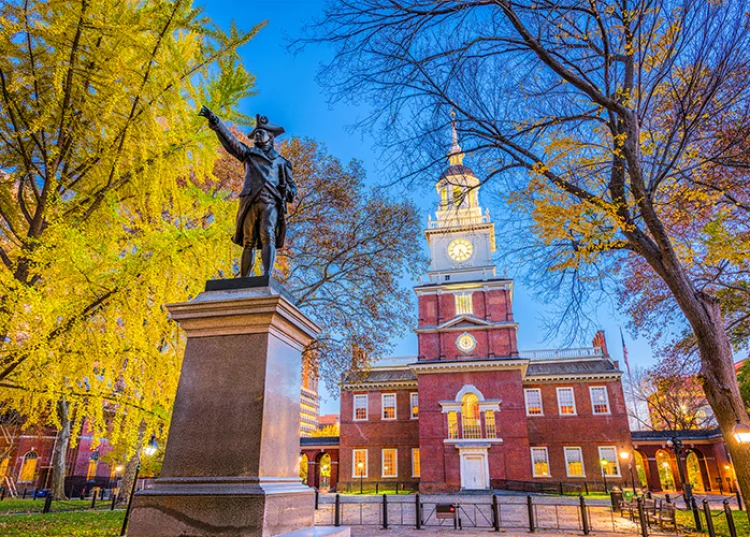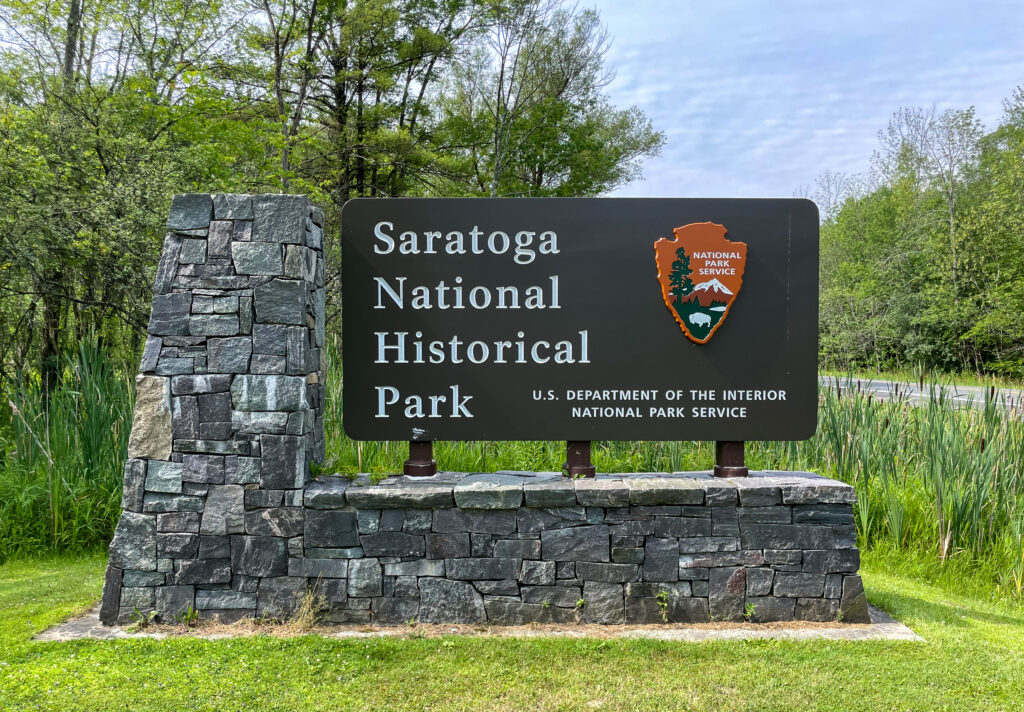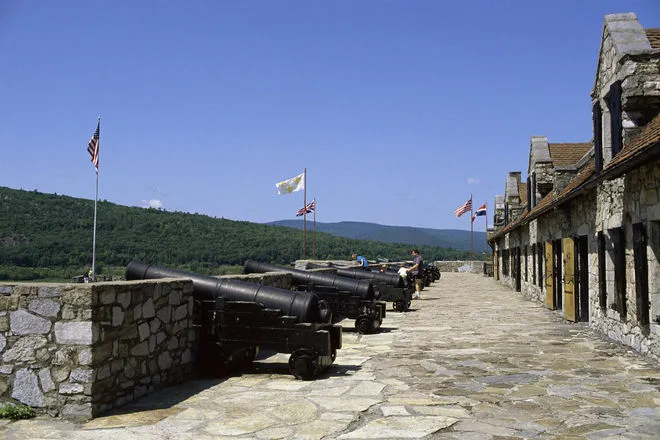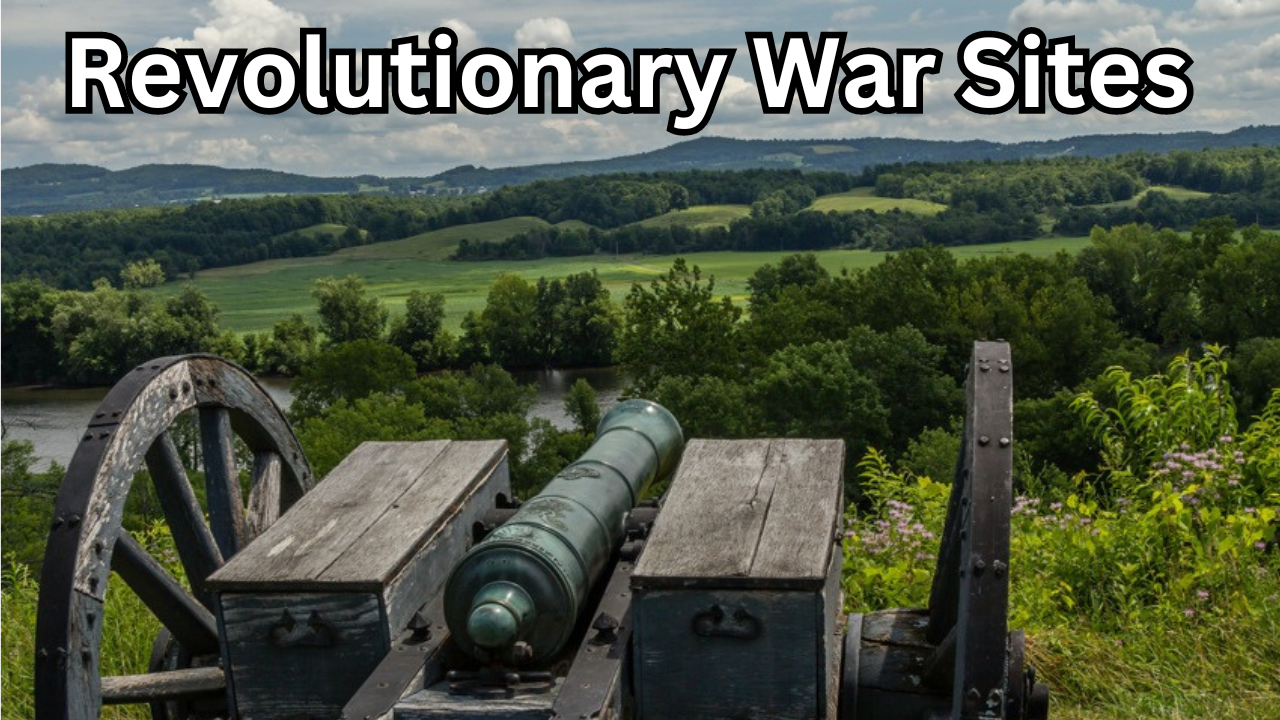Table of Contents
Introduction
The American Revolutionary War, fought from 1775 to 1783, was a pivotal moment in history that laid the foundation for the birth of a nation and influenced global perspectives on governance and freedom. Visiting Revolutionary War sites offers a profound opportunity to immerse oneself in the tumultuous struggles and decisive moments that shaped the United States and the world.
From the iconic battlefields where courageous soldiers clashed for independence to the peaceful landscapes that now preserve their memory, these sites stand as living testaments to the courage, sacrifice, and resilience of those who fought for liberty. Whether exploring the hallowed grounds of Bunker Hill, tracing the winter hardships at Valley Forge, or reflecting on the diplomacy that shaped alliances in Paris, each location provides a unique window into a transformative era.
Join us on a journey through these must-visit locations, where history comes alive and the echoes of the past resonate with lessons for the present and future.
Brief Overview of the American Revolutionary War
The American Revolutionary War, spanning from 1775 to 1783, was a conflict between the thirteen American colonies and Great Britain. It arose from tensions over colonial governance and taxation without representation, ultimately culminating in a quest for independence. Key events such as the Battles of Lexington and Concord in 1775, the signing of the Declaration of Independence in 1776, and the surrender of British forces at Yorktown in 1781 marked significant turning points in the war. The war concluded with the Treaty of Paris in 1783, formally recognizing the United States as an independent nation.
Importance of Visiting Historical Sites for Understanding the War’s Impact
Visiting Historical Tour sites related to the American Revolutionary War provides a tangible connection to the events, places, and people who shaped the course of history. These sites offer more than just physical remnants; they serve as educational tools that bring the past to life. By walking the battlefields of Bunker Hill or Valley Forge, exploring the homes of founding figures like George Washington or Thomas Jefferson, and witnessing artifacts and exhibits in museums dedicated to the era, visitors can gain a deeper appreciation for the challenges faced and sacrifices made during this transformative period.
Moreover, these sites offer insights into the ideals of liberty, democracy, and independence that continue to resonate globally. They highlight the complexities of war, diplomacy, and the struggle for self-determination, fostering a greater understanding of the foundations upon which modern societies are built.
In essence, visiting Revolutionary War sites not only preserves and honors the past but also enriches our understanding of how historical events continue to shape our world today.
Key Revolutionary War Sites

Bunker Hill, Massachusetts, USA
Bunker Hill in Massachusetts holds significant historical importance as the site of a pivotal battle during the American Revolutionary War. Fought on June 17, 1775, the Battle of Bunker Hill, though primarily occurring on nearby Breed’s Hill, showcased the early determination and courage of American colonial forces against the British Army. Despite ultimately being forced to retreat, the colonists inflicted heavy casualties on the British, proving their capability to stand and fight for their independence. The battle boosted American morale and highlighted the strategic importance of fortifications overlooking Boston. Today, the Bunker Hill Monument stands as a towering tribute to the sacrifices made during the battle, offering visitors panoramic views and a museum that educates on the significance of this historic event in shaping American history and ideals of liberty.
Description of the Battle and Its Significance
The Battle of Bunker Hill, fought on June 17, 1775, near Boston, Massachusetts, was a critical early engagement in the American Revolutionary War. Despite its name, the majority of the fighting actually took place on nearby Breed’s Hill. The battle was initiated when colonial militias fortified Breed’s Hill to prevent British forces from gaining control of the strategically important Charlestown Peninsula.
Under the command of General William Howe, British troops launched a series of assaults against the entrenched colonial forces led by Colonel William Prescott. Despite suffering heavy casualties, the colonists managed to inflict significant losses on the British, demonstrating their determination and ability to stand against the might of the British Army.
The Battle of Bunker Hill showcased the resolve of the American forces and boosted their morale, proving that they could effectively challenge British authority. Although technically a British victory due to the eventual colonial withdrawal, it was a costly one that significantly impacted British strategy and reinforced the colonists’ resolve for independence.
Features of the Bunker Hill Monument and Museum
Bunker Hill Monument:
- Symbol of Sacrifice: The Bunker Hill Monument, completed in 1843, stands 221 feet tall and commemorates the bravery and sacrifice of the American soldiers who fought in the battle.
- Panoramic Views: Visitors can climb the 294 steps to the top of the monument, where they are rewarded with panoramic views of Boston and its surroundings, providing a unique perspective on the battlefield.
Bunker Hill Museum:
- Interactive Exhibits: Located nearby, the Bunker Hill Museum offers interactive exhibits and displays that chronicle the events of the battle. Visitors can learn about the tactics employed, view artifacts from the era, and gain insights into the significance of the battle in American history.
- Educational Programs: The museum hosts educational programs and guided tours that delve deeper into the battle’s impact on the Revolutionary War and its lasting legacy.
Together, the Bunker Hill Monument and Museum preserve the memory of the Battle of Bunker Hill and its role in shaping the course of the American Revolution. They provide visitors with an immersive experience that honors the courage of those who fought for independence and highlights the strategic importance of this historic site.
Valley Forge, Pennsylvania, USA
Valley Forge in Pennsylvania is synonymous with the endurance and resilience of the Continental Army during the harsh winter of 1777-1778 in the American Revolutionary War. Chosen by General George Washington as the winter encampment for his troops, Valley Forge became a crucible where soldiers endured severe hardships including bitter cold, inadequate shelter, and scarce provisions. Despite these challenges, the time spent at Valley Forge was pivotal in transforming the Continental Army into a more disciplined and cohesive fighting force under the guidance of Baron von Steuben and other European officers. Today, Valley Forge National Historical Park preserves the huts where soldiers lived, Washington’s headquarters, and offers visitors a glimpse into the sacrifices made for American independence. It stands as a testament to the perseverance and determination that helped shape the course of the Revolutionary War and ultimately, the birth of the United States as a nation.
Role of Valley Forge in the War
Valley Forge played a crucial role in the American Revolutionary War as the winter encampment for the Continental Army from December 1777 to June 1778. Chosen by General George Washington, Valley Forge provided a strategic location northwest of Philadelphia where the army could regroup and train amidst the harsh winter conditions. The army faced numerous challenges during their stay, including shortages of food, clothing, and supplies, as well as the spread of disease. Despite these hardships, Valley Forge became a turning point for the Continental Army, thanks to the efforts of Baron von Steuben and other European officers who trained the soldiers in military discipline and tactics. This period of training and hardship transformed the Continental Army into a more effective fighting force that would go on to achieve decisive victories in the later stages of the war.
Exploration of Valley Forge National Historical Park
Historical Significance:
Valley Forge National Historical Park preserves the historic grounds where the Continental Army camped during that fateful winter. Visitors can explore reconstructed log huts that replicate the living conditions of the soldiers, gaining a firsthand understanding of the hardships they endured. Washington’s headquarters, known as the Isaac Potts House, offers insights into the command structure and decision-making processes of the army leadership during this critical period.
Visitor Experience:
The park features miles of hiking trails that lead through the wooded hillsides and fields where soldiers drilled and trained. Exhibits and interpretive programs at the Visitor Center provide a comprehensive overview of the encampment and its significance in American history. Guided tours and living history demonstrations bring the experience to life, showcasing the daily life of soldiers and the contributions of civilians who supported the war effort.
Memorials and Monuments:
Throughout the park, visitors will find memorials and monuments honoring the soldiers who endured the hardships of Valley Forge. These memorials serve as poignant reminders of the sacrifices made during the Revolutionary War and the enduring legacy of perseverance and determination that shaped the birth of the United States.
Valley Forge National Historical Park stands as a testament to the resilience of the American soldiers and the pivotal role this site played in shaping the outcome of the Revolutionary War. It offers visitors a profound opportunity to connect with the sacrifices and achievements of those who fought for American independence.
Lexington and Concord, Massachusetts, USA
Lexington and Concord, Massachusetts, hold profound historical significance as the starting points of the American Revolutionary War on April 19, 1775. These neighboring towns were the sites of the first military engagements between colonial militia and British forces. The skirmishes began when British troops marched from Boston to seize colonial arms and supplies stored in Concord. In Lexington, the confrontation at Lexington Green marked the first shots fired in defense of American liberties, immortalized as the “Shot Heard ‘Round the World.” The conflict intensified as the British continued to Concord, where the outnumbered colonial militia engaged them at the North Bridge, forcing the British retreat. Today, visitors to Lexington and Concord can explore historic sites such as Lexington Green and the Old North Bridge, where monuments and museums commemorate the bravery and determination of those who ignited America’s quest for independence.
Start of the War with the Battles of Lexington and Concord
The Battles of Lexington and Concord, fought on April 19, 1775, marked the beginning of the American Revolutionary War. These pivotal engagements occurred in the towns of Lexington and Concord, Massachusetts, as British troops sought to seize colonial munitions and suppress growing dissent among the American colonists. In Lexington, the first shot was fired at Lexington Green, where colonial militia confronted British regulars. This initial skirmish escalated tensions and set the stage for further conflict.
The action continued in Concord, where the British aimed to destroy military supplies stored by the colonists. At the North Bridge, Concord’s colonial militia engaged the British forces, resulting in a significant British retreat back to Boston. The battles, though relatively small in scale, symbolized the colonists’ determination to resist British authority and defend their rights and liberties.
Historical Significance and Visitor Attractions
Historical Sites:
- Lexington Green: This peaceful village green was the site of the first shots of the Revolutionary War. Visitors can see the Minuteman Statue, which commemorates the brave colonial militia who faced the British.
- Old North Bridge, Concord: A pivotal site where colonial militia confronted and repelled British forces. The North Bridge is now part of Minute Man National Historical Park and offers scenic views of the Concord River.
Museums and Interpretive Centers:
- Minute Man Visitor Center: Located near the Old North Bridge, this center provides exhibits and information about the events leading up to and following the battles of Lexington and Concord. Visitors can learn about the roles of key figures like Paul Revere and the impact of these battles on American history.
Educational Programs and Tours:
- Ranger-guided Tours: Offered at Minute Man National Historical Park, these tours delve into the military tactics, strategies, and the daily life of soldiers during the Revolutionary War. They provide a deeper understanding of the significance of these battles in shaping American independence.
Lexington and Concord stand as enduring symbols of American courage and determination in the face of oppression. These historic sites offer visitors a profound opportunity to connect with the events that sparked the Revolutionary War and explore the principles of liberty and independence that continue to define the United States.
Yorktown, Virginia, USA
Yorktown, Virginia, holds immense historical significance as the site of the decisive Battle of Yorktown, which took place from September 28 to October 19, 1781, during the American Revolutionary War. This pivotal engagement marked the culmination of years of conflict between American forces and the British Army under General Charles Cornwallis. Led by General George Washington and supported by French troops under General Rochambeau, the American forces laid siege to Cornwallis’ British army, trapping them on the Yorktown Peninsula. The siege ultimately forced Cornwallis to surrender, effectively ending major hostilities in North America and paving the way for American independence. Today, Yorktown Battlefield and the American Revolution Museum at Yorktown offer visitors a chance to explore the battlefield, view historical artifacts, and gain insights into the strategies and sacrifices that led to this significant victory in American history.
Final Major Battle Leading to British Surrender
Yorktown, Virginia, is renowned for hosting the final major battle of the American Revolutionary War, which culminated in the British surrender on October 19, 1781. The Battle of Yorktown unfolded as American and French forces, commanded by General George Washington and General Rochambeau respectively, besieged British General Charles Cornwallis and his troops on the Yorktown Peninsula. This strategic location along the Chesapeake Bay prevented Cornwallis from receiving reinforcements or escape by sea. The ensuing siege, combined with naval support from the French fleet under Admiral de Grasse, led to the British forces’ surrender, marking a decisive turning point in the war. Cornwallis’s capitulation effectively ended major hostilities in North America and set the stage for negotiations that would eventually result in the Treaty of Paris, securing American independence from Great Britain.
Yorktown Battlefield and the American Revolution Museum
Yorktown Battlefield:
- Historical Landmarks: Visitors to Yorktown Battlefield can explore well-preserved earthworks and fortifications that played a crucial role in the siege of Yorktown. These include British and American redoubts, siege lines, and interpretive trails that offer insights into the tactics and strategies employed during the battle.
- Monuments and Memorials: The battlefield is dotted with monuments commemorating key figures and events of the siege, such as the French Memorial and the Monument to Alliance and Victory.
American Revolution Museum:
- Interactive Exhibits: Located adjacent to the battlefield, the American Revolution Museum at Yorktown offers immersive exhibits that chronicle the entire Revolutionary period. Visitors can explore galleries featuring artifacts, dioramas, and multimedia presentations that highlight the causes, events, and impact of the war.
- Living History: The museum hosts living history demonstrations and reenactments that provide a vivid portrayal of life during the Revolutionary era. These programs offer a deeper understanding of the challenges faced by soldiers, civilians, and leaders during this transformative period in American history.
Yorktown Battlefield and the American Revolution Museum at Yorktown stand as enduring tributes to the perseverance and sacrifices of those who fought for American independence. Together, they offer visitors a comprehensive experience that celebrates the culmination of the Revolutionary War and its lasting impact on the United States and the world.
Saratoga National Historical Park, New York, USA

Saratoga National Historical Park, located in New York, USA, commemorates the pivotal Battles of Saratoga, fought in September and October 1777 during the American Revolutionary War. These battles are widely regarded as a turning point in the war, as American forces, under the command of General Horatio Gates and supported by Benedict Arnold, decisively defeated British General John Burgoyne’s army. The victories at Saratoga convinced the French to openly support the American cause, leading to a formal alliance that greatly bolstered the Continental Army’s efforts against the British. The park preserves the battlefield sites, including Freeman’s Farm and Bemis Heights, where visitors can explore preserved earthworks, tour interpretive trails, and visit the Saratoga Monument, which commemorates the American victory. Saratoga National Historical Park offers a compelling glimpse into the strategic importance of these battles and their profound impact on the outcome of the Revolutionary War, solidifying its significance in American history.
Turning Point Battles in the War
Saratoga National Historical Park in New York, USA, preserves the historic battlegrounds of the Battles of Saratoga, fought in September and October 1777 during the American Revolutionary War. These battles are widely recognized as a crucial turning point in the war. American forces, under the leadership of General Horatio Gates and with notable contributions from General Benedict Arnold, achieved decisive victories over British General John Burgoyne’s army. The defeat of Burgoyne’s forces at Freeman’s Farm and Bemis Heights not only lifted American morale but also convinced the French to openly ally with the American cause. This pivotal alliance provided crucial military and financial support, significantly altering the course of the war and enhancing the prospects of American independence.
Features of the Park and Battlefield Tours
Park Features:
- Saratoga Monument: A prominent feature within the park, the Saratoga Monument commemorates the American victory at Saratoga. Visitors can climb to the top for panoramic views of the battlefield and surrounding area.
- Battlefield Sites: The park includes preserved battlefield sites such as Freeman’s Farm and Bemis Heights, where visitors can explore original earthworks and gain insights into the strategic maneuvers and engagements that shaped the battles.
- Visitor Center: The park’s Visitor Center offers exhibits, artifacts, and interactive displays that provide a comprehensive overview of the Battles of Saratoga. These exhibits highlight the key events, personalities, and significance of the battles in the context of the Revolutionary War.
Battlefield Tours:
- Guided Tours: Saratoga National Historical Park offers guided tours led by knowledgeable park rangers. These tours provide in-depth historical commentary and lead visitors through the battlefield sites, offering a deeper understanding of the tactical decisions, military engagements, and the broader implications of the Battles of Saratoga.
- Self-Guided Trails: Visitors can also explore self-guided trails that traverse the battlefield sites. Interpretive signs along these trails provide historical context and highlight notable features, allowing visitors to explore at their own pace while learning about the pivotal events that unfolded on these grounds.
Saratoga National Historical Park stands as a testament to the courage and determination of those who fought in the Battles of Saratoga and their significant impact on American history. It offers visitors a compelling opportunity to connect with the events that shaped the Revolutionary War and to appreciate the sacrifices and strategic decisions that contributed to the ultimate triumph of the American cause for independence.
International Revolutionary War Sites

Quebec City, Canada
Quebec City, Canada, holds a rich historical legacy deeply intertwined with North American colonial conflicts and the American Revolutionary War. The city’s strategic location along the St. Lawrence River made it a focal point of military and diplomatic maneuvers during the 18th century. In 1759, British forces under General James Wolfe famously defeated the French at the Battle of the Plains of Abraham, leading to British control over Quebec and ultimately, Canada. During the American Revolutionary War, Quebec City briefly became a battleground again as American forces, under General Richard Montgomery and Benedict Arnold, attempted to capture the city in 1775. Today, Quebec City stands as a UNESCO World Heritage site, renowned for its well-preserved colonial architecture, fortified city walls, and historic sites such as the Citadel and Château Frontenac. Visitors can explore museums, walk along cobblestone streets, and immerse themselves in the vibrant French-Canadian culture that continues to thrive within this picturesque and historically significant city.
Canadian Involvement and Battles During the War
Canada played a significant role during the American Revolutionary War, primarily as a battleground and strategic asset for both British and American forces. In 1775, American troops, led by generals Richard Montgomery and Benedict Arnold, launched an ambitious campaign to capture Quebec City and enlist Canadian support for the revolution. The resulting Battles of Quebec saw mixed outcomes, with American forces ultimately repelled despite initial successes. The Quebec campaign highlighted Canada’s crucial role in the war as a vital British stronghold and influenced the broader geopolitical dynamics of the conflict.
Visiting the Plains of Abraham and Historical Sites
Plains of Abraham:
The Plains of Abraham in Quebec City is a historic battlefield that witnessed the pivotal Battle of the Plains of Abraham on September 13, 1759, during the French and Indian War. This battle, where British forces under General James Wolfe defeated the French under General Louis-Joseph de Montcalm, led to the British capture of Quebec and marked a turning point in North American colonial history. Today, the Plains of Abraham is a National Battlefield Park offering visitors picturesque views, walking trails, and interpretive exhibits that delve into the military strategies and consequences of this decisive clash.
Quebec City Historical Sites:
- Citadel of Quebec: A star-shaped fortress located atop Cap Diamant, the Citadel is a National Historic Site and the largest British-built fortress in North America. Visitors can take guided tours to learn about its military history and enjoy panoramic views of Quebec City.
- Château Frontenac: A historic hotel and architectural landmark, Château Frontenac overlooks the St. Lawrence River and offers guided tours highlighting its role in Canadian history and as a symbol of Quebec City’s heritage.
- Old Quebec (Vieux-Québec): A UNESCO World Heritage site, Old Quebec is a charming district with narrow cobblestone streets, historic buildings, and vibrant shops and restaurants. Visitors can explore landmarks such as Place Royale, Notre-Dame de Québec Basilica-Cathedral, and the historic city walls.
Quebec City’s historical sites, including the Plains of Abraham, offer visitors a unique opportunity to explore Canada’s rich colonial past, experience its cultural diversity, and appreciate the enduring legacy of pivotal battles that shaped North American history.
Paris, France

Paris, France, holds a storied history as a cultural, political, and intellectual center that has shaped the course of Western civilization. Beyond its iconic landmarks like the Eiffel Tower and Louvre Museum, Paris played a crucial role during the American Revolutionary War as a diplomatic hub. It was here that American diplomats, including Benjamin Franklin, negotiated critical alliances and secured essential support from the French monarchy, crucially aiding the American colonies in their fight against British rule. The Treaty of Paris of 1783, which formally ended the war and recognized American independence, was also signed in Paris. Today, Paris continues to attract millions of visitors who come to admire its architectural splendor, explore its world-class museums, and experience its vibrant cultural scene. The city’s historical significance in fostering international diplomacy and its enduring allure as a global capital make it a timeless destination for travelers and history enthusiasts alike.
French Support and Diplomatic Efforts During the War
France played a pivotal role in supporting the American colonies during the American Revolutionary War, offering military aid, financial assistance, and crucial diplomatic backing. Motivated by a desire to weaken their longtime rival, Great Britain, and inspired by Enlightenment ideals of liberty and democracy, the French monarchy, under King Louis XVI, forged alliances with the American colonies. This support was formalized in treaties such as the Treaty of Alliance (1778) and the Treaty of Amity and Commerce, which provided military assistance and opened up French ports to American trade. French military contributions, including naval support under Admiral de Grasse and ground forces led by General Rochambeau, were instrumental in key American victories, such as the Siege of Yorktown in 1781, which effectively ended British military operations in North America and secured American independence.
Museums and Sites Related to American-French Alliances
Musée de l’Armée (Army Museum), Paris
Located within Les Invalides, this museum houses extensive collections related to French military history, including artifacts and exhibitions that highlight France’s involvement in the American Revolutionary War. Visitors can explore exhibits on French military strategy, weapons, and uniforms from the era, offering insights into the contributions of French forces to the American cause.
Château de Rueil-Malmaison, Rueil-Malmaison
This historic château, once home to Empress Joséphine and Napoleon Bonaparte, serves as a cultural center and museum that preserves the legacy of American-French relations. Visitors can view exhibits related to diplomatic exchanges, treaties, and personal correspondence between American and French leaders during the Revolutionary War period.
Palace of Versailles, Versailles
While primarily known for its opulent royal history, the Palace of Versailles also played a significant role in American-French diplomatic efforts. It was here that negotiations leading to the Treaty of Paris (1783) took place, formally recognizing American independence from Britain and solidifying the alliance between France and the United States. Visitors can tour the palace and gardens, including rooms where diplomatic discussions occurred, gaining a deeper understanding of the treaty’s impact on global politics.
Alliance Française Foundation, Paris
Founded to promote French language and culture globally, the Alliance Française Foundation showcases exhibitions and educational programs that explore France’s historical relationships with other nations, including its alliance with the United States during the Revolutionary War. Visitors can participate in lectures, screenings, and cultural events that highlight the enduring significance of Franco-American relations.
These museums and sites offer visitors a comprehensive look at the diplomatic, military, and cultural dimensions of the American-French alliances during the Revolutionary War, underscoring the shared ideals and historical collaborations that continue to shape international relations today.
Conclusion
In conclusion, the American Revolutionary War stands as a transformative chapter in world history, marking the birth of a new nation founded on principles of liberty, democracy, and self-determination. From the early skirmishes at Lexington and Concord to the decisive battles at Saratoga and Yorktown, the struggle for independence tested the resolve and courage of American colonists against the might of the British Empire. Crucial alliances, such as those with France, played a pivotal role in tipping the scales in favor of the American cause, highlighting the war’s global significance. Today, the legacy of the Revolutionary War lives on through the preserved battlefields, museums, and historic sites that educate and inspire visitors about the sacrifices and ideals that forged a nation. As we reflect on this defining period, we recognize its enduring impact on shaping democratic movements worldwide and reaffirm the principles of freedom and equality that continue to resonate in societies across the globe.
Importance of Preserving and Visiting Revolutionary War Sites
Preserving Revolutionary War sites is crucial for honoring the sacrifices and achievements of those who fought for American independence. These sites serve as tangible connections to our nation’s founding principles and the pivotal events that shaped its history. By visiting these locations, whether it’s the battlefields of Lexington and Concord, the encampments at Valley Forge, or the surrender grounds at Yorktown, individuals can gain a deeper appreciation for the challenges faced and the resilience shown by our forebearers. These sites provide educational opportunities to learn about the strategies, sacrifices, and ideologies that influenced the outcome of the war. They also offer spaces for reflection and remembrance, ensuring that future generations understand the enduring significance of the Revolutionary War in shaping our national identity and values.
Reflection on the Impact of the War on Modern History
The American Revolutionary War profoundly impacted modern history by establishing the United States as a beacon of democracy and individual liberty. The successful rebellion against British colonial rule set a precedent for independence movements worldwide, inspiring revolutions and movements for self-governance across the globe. The ideals of freedom, equality, and representative government espoused during the Revolutionary War continue to influence political thought and governance structures internationally. Moreover, the war’s outcome fundamentally altered global power dynamics, weakening European colonial dominance in the Americas and paving the way for new alliances and geopolitical shifts. As we reflect on the Revolutionary War’s legacy, we recognize its role in shaping modern democracies and affirming the enduring principles of human rights and self-determination that remain at the heart of contemporary political discourse.
